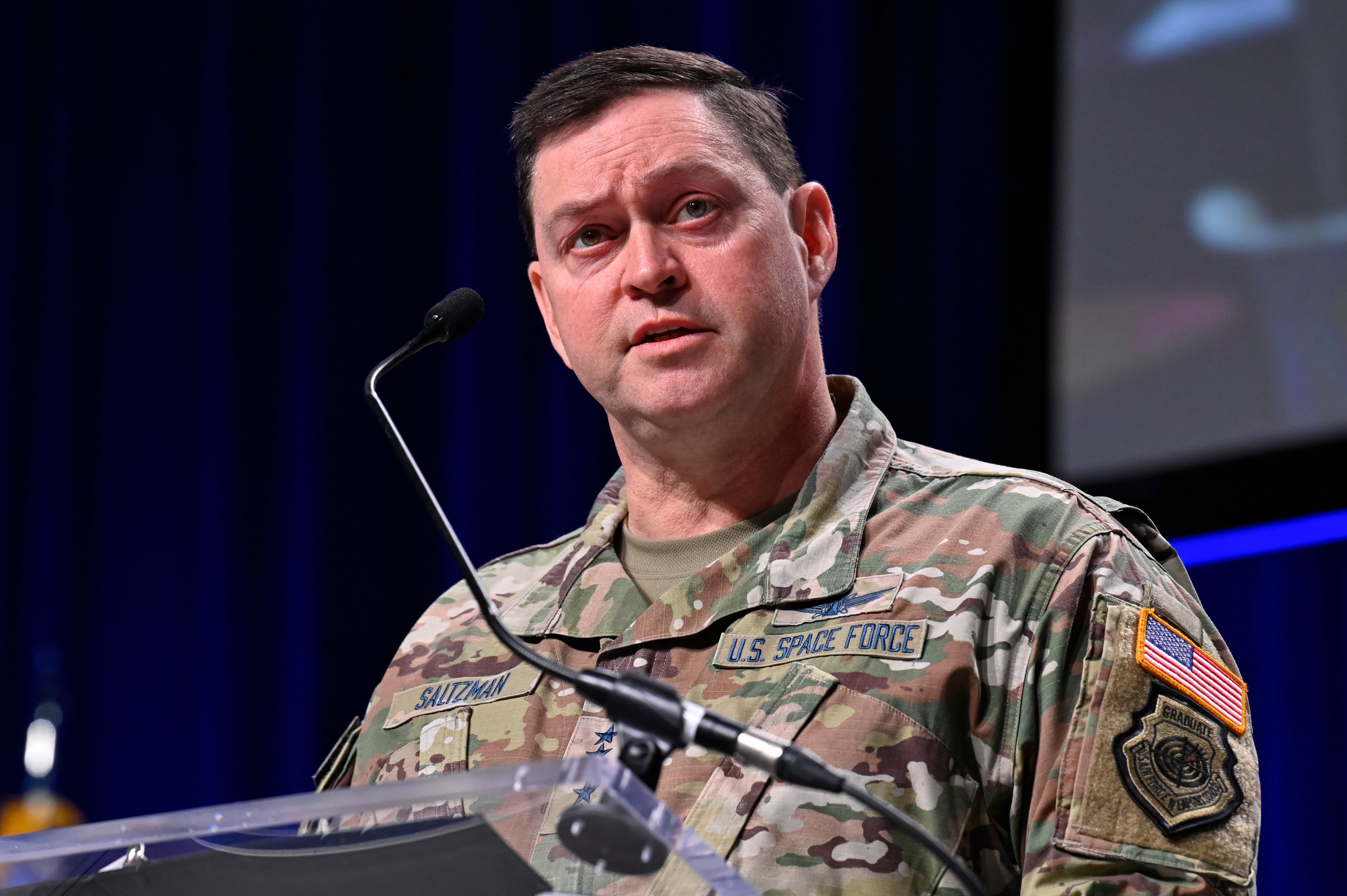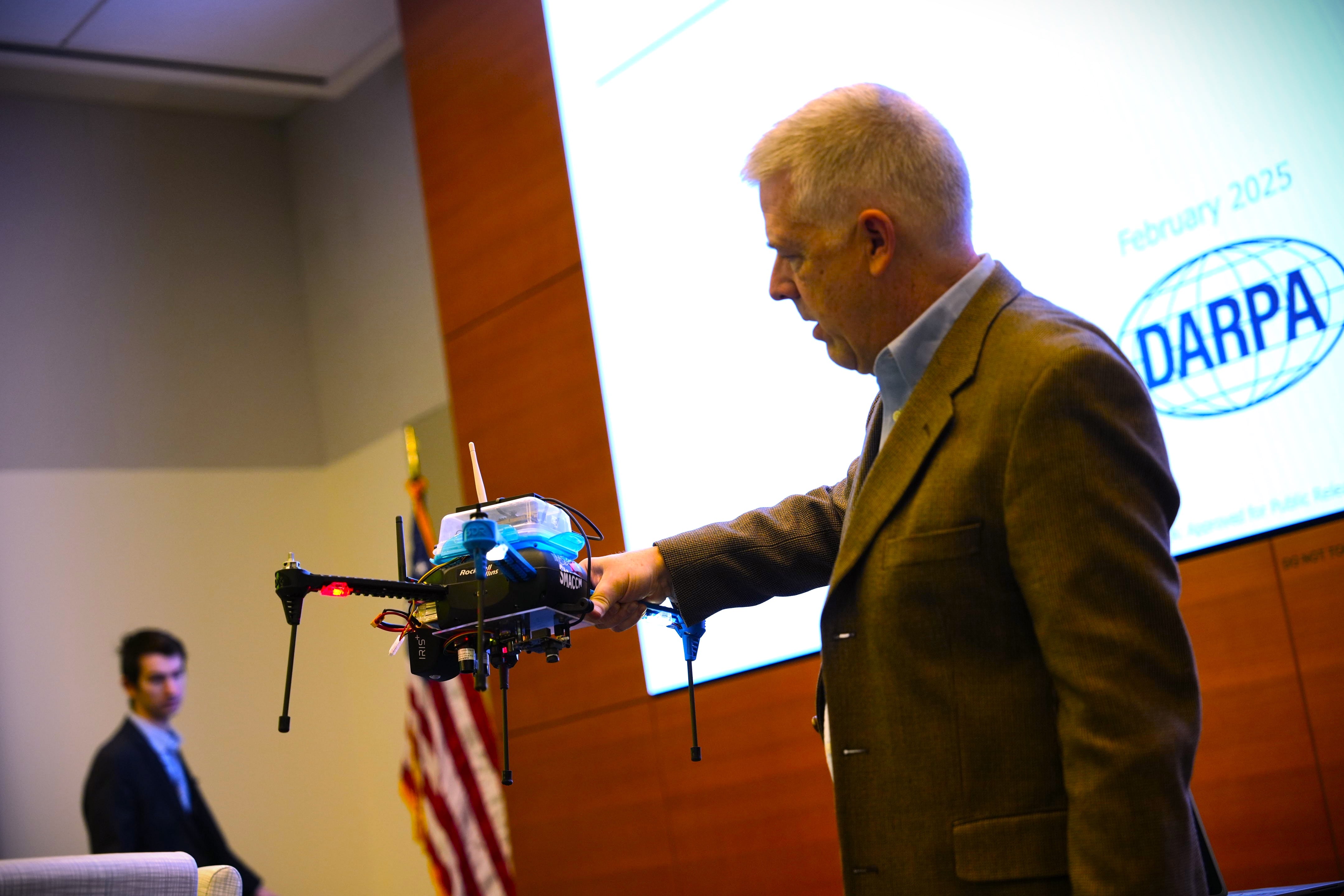WASHINGTON ― Despite signs the labor market is starting to cool, aerospace and defense industry executives said they’re still struggling with hiring, training and the loss of skilled workers.
“Shipbuilding is a very complex, high-touch labor business, and when you have a nationwide perturbation in the nation in the labor market, you’re going to be impacted,” General Dynamics chief executive Phebe Novakovic told investors on the company’s third quarter earnings call last week.
Novakovic said a labor “perturbation” at its hull-fabrication and outfitting facility in Quonset Point, R.I., was starting to ebb, but GD’s suppliers saw higher than normal retirement rates during the pandemic.
“While we kept open, not all of the supply chain did. But we also lost a number of experienced shipbuilders, as well as experienced people, manufacturing folks in the supply chain,” she said.
It’s not just General Dynamics. A review of the first batch of quarterly earnings calls shows top defense firms still see a tighter labor market and higher costs associated with it taking a toll on sales and profit margins.
On Raytheon Technologies’ call last week, CEO Greg Hayes said compensation, supply chain kinks and energy prices have led to $2 billion in cost growth so far this year. Compensation costs, which usually rise about 3% annually, have spiked well beyond that amid the tight labor market.
“The biggest inflationary impact really comes in compensation,” Hayes said. “We’re obviously seeing more pressure on compensation, given what’s going on in the marketplace today.”
Raytheon has hired 27,000 people this year and needs 10,000 more. At its subsidiary, Pratt & Whitney, which makes aircraft engines for civil and military customers, it’s taking time to train workers in how to cast parts.
“It’s not necessarily a capacity issue, it’s labor availability,” Hayes said. “I mean, how do you get trained welders working efficiently? That remains a challenge.”
Compensation drives turnover
Amid the exodus of employees across the economy over the last 12 months, 70% of companies in the aerospace and defense sector saw increased turnover, according to a new workforce study conducted by the Aerospace Industries Association and the American Institute of Aeronautics and Astronautics in collaboration with Ernst & Young. Overall turnover rose to 7% versus nearly 6% the year before.
The talent shortage comes as many companies in the sector are ramping up production amid the rebound of air travel from the pandemic and an increase in global demand for weapons linked to Russia’s invasion of Ukraine, as well as a new focus on space travel and exploration.
“There are a number of issues that are creating headwinds for the aerospace and defense industry, and they all touch on each other and overlap in certain ways ― and if you pull the thread on any one of them, it often ends up being a workforce issue,” AIA’s chief executive, Eric Fanning, told Defense News. “The biggest limiting factor we’re finding in the supply chain is labor.”
Compensation was the top driver for turnover in the sector, as 78% of turnover was attributed to employees leaving their jobs for the chance to make more money. According to the report, 75% left for career advancement and 31% departed for a better work location or opportunity for remote work.
Fanning said rigid demands on defense contractors are repelling workers. These include the need for employees to get security clearances, educational requirements and labor rates that are limited under contract.
“We have a retention issue, and the requirements levied on the defense industry are such that they decide to leave defense and go somewhere else,” Fanning said. “It’s not really one company in the industry poaching from another company. The workers are leaving the industry.”
On Boeing’s earnings call last week, chief executive Dave Calhoun partially attributed a $1.2 billion charge on the KC-46A Pegasus program and problems with other programs to labor instability. The firm reported a nearly $3.3 billion loss for the quarter.
“I know this: All of us in this industry are wrestling through these constraints,” Calhoun said. “I wish I had ... an easy resolution. I don’t. This is what we’re going to struggle through all year next year.”
Boeing brought on 10,000 people this year, which Calhoun said would be enough to handle most production rate increases, but it takes time to train new workers. Calhoun said it’s a challenge particularly for casting metal, where more labor and experience are needed.
Calhoun said Boeing has put training and development programs in place to get new hires ready as quickly as possible.
“There’s a real learning curve and cycle that is needed to ramp up capacity,” Calhoun explained. “All of us in this industry are wrestling through these constraints. We try to compare notes.”
Calhoun said Boeing is trying to help its suppliers find the employees it needs to get parts made, and sends its own staff to subcontractors to help.
But he said he doesn’t expect the labor market to stabilize until the end of 2023, as layoffs in other industries provide more potential hires.
The labor market in the software industry is already “beginning to soften considerably,” Calhoun said, presenting opportunities for Boeing to hire software engineers it needs.
But Northrop Grumman saw hiring and retention problems that stunted the company’s growth plans in the first half of the year begin to ease over the summer, according to its chief executive, Kathy Warden.
The company added nearly 3,000 workers over the quarter, and Warden saw layoffs at other firms as an opportunity. Still, she was guarded.
“In certain areas, the labor market is starting to soften, but we aren’t counting on that being a significant tailwind to us next year,” she said.
And not every company sees labor as a problem.
Lockheed Martin’s chief financial officer, Jay Malave, said the contractor has been able to absorb higher labor costs, but called it “certainly a watch item as we go forward.” At the same time, Malave told investors Lockheed is looking to pass at least some portion of its rising costs on to the Pentagon.
“We are seeing different changes both on the labor side and in supply chain, and it does have an impact really going forward on bids and proposals,” Malave said. “It’s something that we have to keep in front of us. And we’re having dialogues with the customer.”
Joe Gould was the senior Pentagon reporter for Defense News, covering the intersection of national security policy, politics and the defense industry. He had previously served as Congress reporter.
Stephen Losey is the air warfare reporter for Defense News. He previously covered leadership and personnel issues at Air Force Times, and the Pentagon, special operations and air warfare at Military.com. He has traveled to the Middle East to cover U.S. Air Force operations.








